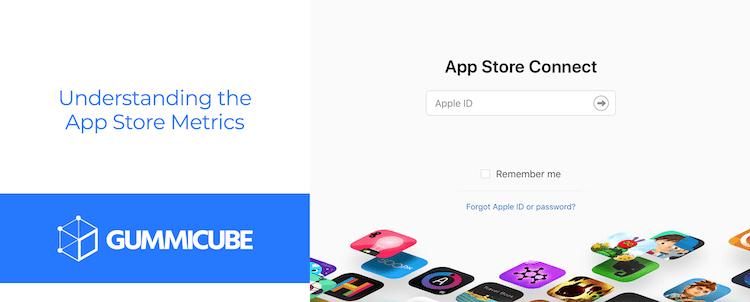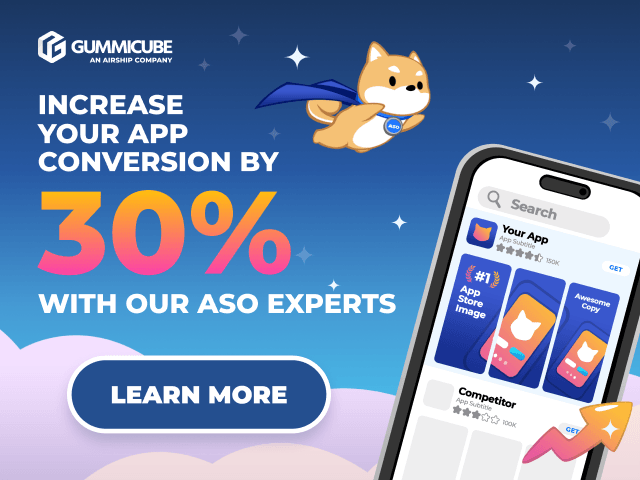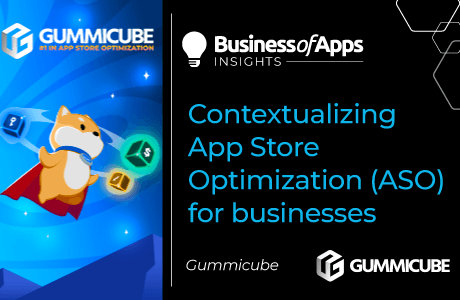Being able to measure the impact of your App Store Optimization is necessary for its success. Analyzing and interpreting the data from the App Store will let you understand where your app is succeeding and how it can grow further. In order to measure your ASO impact, you must first be able to understand how App Store Connect reports metrics and what data is reported.
Accessing Your App’s Metrics
It’s simple to access your app’s metrics from App Store Connect. After logging into the ASC console, click the “App Analytics” icon. This will let you access a high-level overview of data tied to your app’s performance. This includes Impressions, App Units, User Retention, Crashes and Deletions, to name a few.
For a deeper dive into the data, click the “Metrics” tab. This page will enable you to apply filters, compare data sets and so on.
Understanding Traffic Sources
When reporting performance, Apple divides the reports by channel. This includes:
- App Store Search – “Customers viewed your app or tapped to download it for the first time from Search on the App Store. Includes Search Ads in App Store search.”
- App Store Browse – “Customers viewed your app or tapped to download it for the first time while browsing certain sections of the App Store, including Top Charts and Categories.”
- App Referrer – “Customers tapped a link in an app that brought them to your App Store product page. Includes apps that load your product page with StoreKit API.”
- Web Referrer – “Customers tapped a link from a website that brought them to your App Store product page.”
- Unavailable – “Source type is unavailable because customers downloaded your app prior to App Analytics tracking source attribution.”
The Search metrics show organic search and Apple Search Ads, while Browse shows the metrics from users discovering the app outside of searches. App and Web Referrer include traffic from other apps and outside websites, respectively.
Along with filtering data by channel, it’s also important to filter by territory. This way, you can narrow down how changes to a particular localization impacted that territory, without other areas grouped in.
Reported Metrics
When tracking performance on the App Store, there are a few primary metrics reported by App Store Connect to monitor:
- Impressions – “The number of times your app was viewed in the App Store for more than one second. This includes search results, Featured, Explore, Top Charts and App Product Page views.”
- Product Page Views – How many times your app page was clicked on and viewed.
- App Units – each first-time installer “on a device with iOS 8 or tvOS 9, or later.”
App Store Connect offers additional metrics like sales, crashes, etc. that you should monitor depending on the changes you’ve made – however, the “Impression” and “App Unit” metrics are most important when tracking your discoverability and conversion. Impressions are a better measure of discoverability for Search, since most users will download directly from Search without tapping to view your Product Page. Also, keep in mind that these metrics are tied to users who have never installed your app before; returning users re-installing are not counted.
Measuring Impact
When you want to measure the success of your organic performance, whether for impressions or app units, you should understand what kind of impact you’re measuring. New metadata, screenshots, changes in paid marketing and so forth can have different impacts on performance.
It’s important to track how your app’s performance changes after an update in order to measure the impact. For example, if you’re updating metadata to increase keyword visibility and rankings, track how your impressions in search are impacted. If you change your screenshots or other creative elements, monitor how that impacts your conversion rate.
Understanding the filters for source and definitions of metrics in App Store Connect is critical to understanding your performance. For a better understanding of how your App Store Optimization is performing, it’s also vital to measure your organic keyword rankings as changes are made. Monitoring which high volume keywords your app ranks for, and which are not performing, can help give you insight into how users are able to discover your app organically. For example, if you see an increase in Search Impressions after a metadata deployment, measuring which high volume keywords your app has moved into top ranking positions for can give you insight into how users can discover your app, which can’t be done with App Store Connect alone.
Conclusion
Measuring impact is key to ASO success. Fortunately, Apple provides a platform with a useful way to help understand performance.
When analyzing a deployment or campaign’s impact, you need to be sure to understand what was optimized such as metadata or creative. Whether it’s metadata, creatives or something entirely different, understanding what’s changing and how helps you understand the change’s impact on performance and channels. Overall, being able to understand how the App Store reports your data and how to analyze it, and supplementing that data with keyword ranking changes, will help you grow your app and your business.












